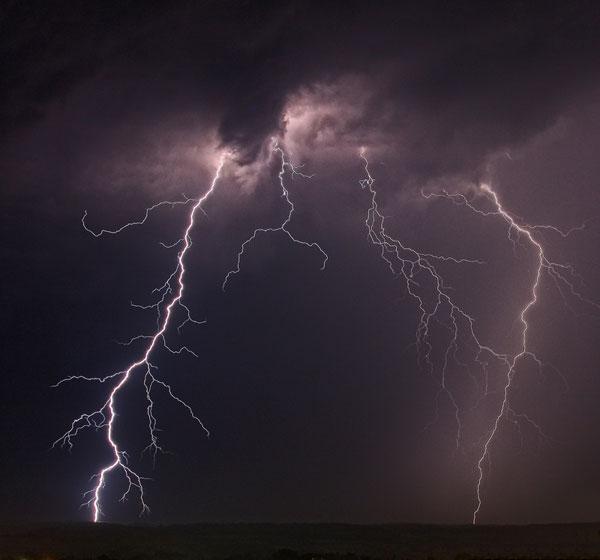How Lightning Sparks High-Energy Bursts


Thunderstorms are powerful enough to generate flashes of gamma-rays, the highest-energy form of light, in Earth's atmosphere, and now scientists are uncovering how they do so.
These gamma-ray flashes typically last for less than a millisecond. They can actually create antimatter, heeding Einstein's famous equation E=mc2, which revealed that energy can be converted into mass and vice versa. (Gamma rays are also emitted by powerful explosions in the distant universe, though these are separate phenomena.)
These bursts of energy, known as terrestrial gamma-ray flashes, come from lightning. The powerful electric fields of lightning bolts hurl avalanches of electrons near the speed of light, which give off gamma-rays after they slam into air molecules. Satellites revealed these flashes originate from "intra-cloud lightning," which arcs within thunderclouds. This is the most common form of lightning .
Uncovering more about the link between terrestrial gamma-ray flashes and lightning has proven difficult, as the chances of a satellite flying over a lightning storm that scientists are monitoring at exactly the time such gamma-ray flashes occur is very, very small. Nevertheless, researchers have now managed to analyze bursts of radio waves that gamma ray-emitting bolts give off, shedding light on what parameters of lightning might cause this radiation.
Lightning happens in stages. First, a streamer of electricity travels from one charged area to another, say, from a cloud to the ground, or from one layer within a cloud to another. This prompts a return stroke with the reverse charge to go in the opposite direction. The initial streamer electrified the air it moved through, creating a path of least resistance that allows the return stroke to carry a much greater current.
Scientists analyzed 56 terrestrial gamma-ray flashes with the Reuven Ramaty High Energy Solar Spectroscopic Imager (RHESSI) satellite from 2004 to 2009 and compared them with bursts of radio waves that happened at the same time.
The large majority of terrestrial gamma-ray flashes are apparently caused by so-called "positive lightning," where the initial streamers are positively charged. Although most cloud-to-ground lightning is negative, most intracloud lightning is positive.
Get the world’s most fascinating discoveries delivered straight to your inbox.
"Terrestrial gamma-ray flashes are produced by what seems in many ways like very ordinary and common lightning," said researcher Steven Cummer, an electrical engineer at Duke University. "But that they also seem rare according to gamma-ray detection is part of the puzzle of terrestrial gamma-ray flashes."
These gamma-ray flashes accompany 2-to-6-millisecond-long pulses of ultra-low-frequency radio waves, which are signs they are linked with unusually strong movements of electrical charge.
"Now that we've identified an important terrestrial gamma-ray flash-associated process, we can begin to use our radio measurements of lightning to find out how common it is," Cummer told OurAmazingPlanet. "Now that we have what appears to be a fairly reliable signature of a terrestrial gamma-ray flash that can be found from ground-based lightning measurements alone, we can dramatically expand the number and detail of events we can look at."
The scientists detailed their findings online March 16 in the Journal of Geophysical Research-Space Physics.
- Image Gallery: Electric Earth
- Is It Possible to Have Lightning Without Thunder?
- The World's Weirdest Weather



